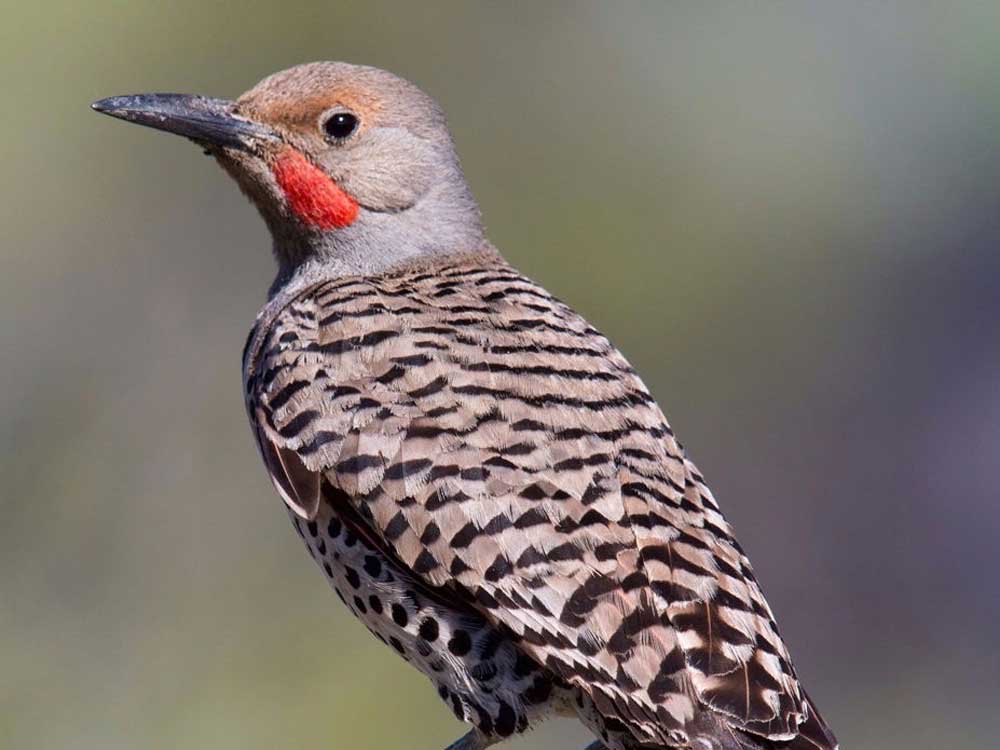The pounding and perils of woodpeckers
Published 6:30 am Thursday, March 23, 2017

- A Northern Flicker woodpecker. ( East Cascades Audubon Society/Submitted photo)
Rod Mackenzie never had a problem with woodpeckers until they started banging holes in the shed he built five years ago on his property outside of Sisters.
At first, the local plumber tried to scare away the woodpeckers with a fake owl. Then he put up a wooden box for them to use instead of his shed. Nothing he tried seemed to work, and Mackenzie decided to live with their rapid-fire pecking. As the birds pecked his shed, he would go out and patch the holes.
“You don’t want to go out there and kill the woodpeckers; you have to figure it out,” Mackenzie said. “You keep going out there and try to shoo them away the best you can.”
Spring is the time of year when woodpeckers show up, not just for Mackenzie, but for residents throughout Central Oregon. The High Desert is home to 11 species of woodpeckers, almost half of the 23 known species across the United States. The most common ones pounding on Central Oregon homes are the Hairy, Downy and the most notorious of woodpeckers — the Northern Flicker.
This spring, Mackenzie plans to try new, more proven solutions with help from Elise Wolf, director of Native Bird Care of Sisters. He is going to hang netting over the siding of the shed to block the birds’ access. He also might use a metal mesh fencing material known as hardware cloth to discourage the birds.
“If a bird has success at a house, the only way to prevent future attempts is to keep it off the house,” Wolf said. “The netting or the hardware cloth are simple and easy and quite effective.”
Another proven exclusion method is placing bright, shiny mylar tape along gutters or at intervals along the highest point of a home, Wolf said.
Many other methods often fail, including fake owls like the one Mackenzie used, sticky materials and bad-tasting paint.
“Most of these solutions are not effective for the long haul,” Wolf said. “Birds get fearful of new things. Once they realize that new thing is not going to hurt them, it won’t work anymore.”
Flickers, known for their bright reddish-orange coloring under their wings, are the largest woodpecker in Central Oregon. This time of year, flickers and other woodpeckers bang loudly on homes as a way to mark their territory. They are attracted to surfaces that make the most noise when they peck.
“The flicker is looking to say, ‘Hey world, this is my area,” Wolf said. “It can do some serious damage on a house.”
In addition, woodpeckers bang on homes in an effort to create an area for nesting, but that is not as common as marking their territory, Wolf said.
During the summer, woodpeckers peck homes to feed on insects, particularly ants.
If a home has multiple holes, the woodpecker was likely looking for food, Wolf said.
If there is one big hole, Wolf said, the woodpecker was likely building a house in someone’s house.
“Woodpeckers need quality habitat,” Wolf said. “If you have a woodpecker, you either have bugs on your house or you have enough food in your yard for that bird to think they can raise a family.”
By winter, woodpeckers no longer cause a problem for homeowners. Only 40 percent of flickers survive the winter in Central Oregon.
Wolf said it is important for all residents to learn how to live with woodpeckers, and use safe exclusion methods. Woodpeckers are a protected species, and harming them is illegal.
When not pounding on homes, Wolf said, woodpeckers are beneficial to the local ecosystem by eating insects that are unhealthy to trees.
Despite the damage and noise, Mackenzie has learned to peacefully coexist with the woodpeckers. Three years ago, Mackenzie watched as woodpeckers hatched out of a nest near the roof of his shed. The birds have never touched his house, where he has lived for 20 years. They are instead drawn to the wood on the shed, likely because of the noise it makes, he said.
As fascinating as the woodpeckers are, Mackenzie said, he is fed up this year.
“They are cool-looking birds,” Mackenzie said, “but they would be a lot cooler if they weren’t destroying my shop.”
— Reporter: 541-617-7820, kspurr@bendbulletin.com
For more resources on how to safely exclude woodpeckers, visit Native Bird Care of Sisters’ website at www.nativebirdcare.org.






